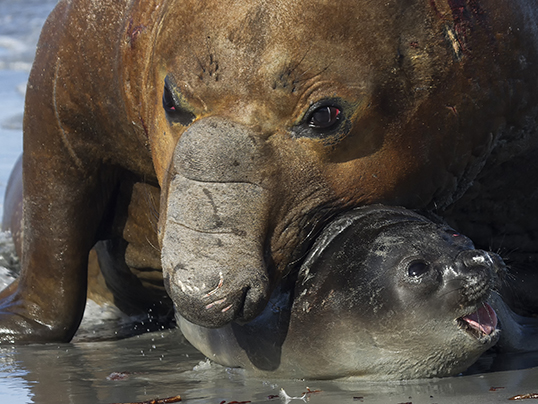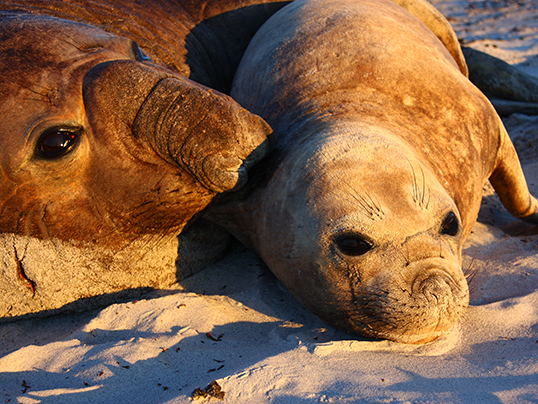Mating behaviour and sexual harassment
Sexual harassment is the use by males of aggressive behavioural modules (like herding, pushing, biting, chasing) when approaching females during the breeding season. Male harassment of females is probably an important factor in evolution of mammals mating systems. In most mating systems, males compete for females and are usually more eager to mate with any partner and at any time than females. This conflict between sexes about when and how much to mate may lead to sexual harassment. Female southern elephant seals gather in large groups during the breeding season. Each group has one or more associated males, and one of these males, the most dominant one, has normally a more or less complete control of the harem. Hence, the mating system is very despotic, and just few males have free access to breeding females. This shortage in mating opportunities is coupled with a very high level of libido of all males. Males may attempt to mate with dead females, weanlings, yearlings and small juveniles, and even with individuals of other species.

Young subadult males tries to mate with a recently weaned pup
Males are larger than females, they have enlarged canines, and they constantly show behavioural patterns of herding and biting while interacting with females. Hence, males can be a significant source of harassment for females, and sexual coercion can be an important component of male mating tactics.In SES breeding behaviour preliminaries are short, and males are often able to overpower females. Cases of forced copulation happen regularly, although not frequently. Hence, male-female interactions are potentially a very risky business for the female. For a female one or few copulations should be all the needed breeding activity to achieve fertilization, and extra copulations and non mating interactions with males are potentially risky events with no functional value for the female. Hence, most male-female interactions are a form of sexual harassment from the point of view of the female, and may have a significant survival cost,

